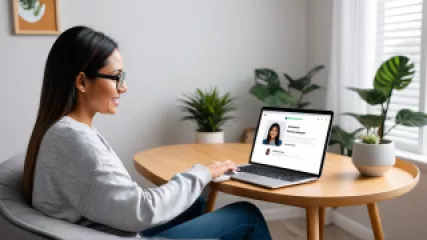The Overlooked Benefits of Incorporating Digital Counseling Sessions into Therapy Basics
The Overlooked Benefits of Incorporating Digital Counseling Sessions into Therapy Basics
In the ever-evolving landscape of mental healthcare, the integration of digital counseling sessions has become an increasingly crucial component of therapy basics. As a seasoned practitioner in the field, Sol Sullivan has witnessed firsthand the profound impact that this innovative approach can have on the emotional well-being of clients. In this opinion piece, Sol explores the often overlooked benefits of incorporating digital counseling sessions into traditional therapeutic modalities, making a compelling case for its widespread adoption.
Accessibility and Convenience: Revolutionizing the Therapy Experience
One of the primary advantages of digital counseling sessions is the enhanced accessibility and convenience they offer to clients. In today's fast-paced world, individuals often struggle to find the time and resources to attend in-person therapy sessions. The integration of digital platforms has revolutionized the therapy experience, eliminating geographical barriers and providing clients with the flexibility to engage in counseling from the comfort of their own homes or wherever they may be.
"Digital counseling sessions have truly transformed the way we approach therapy," explains Sol. "Clients no longer have to worry about the logistical challenges of commuting to a physical office or rearranging their schedules to accommodate rigid appointment times. This newfound accessibility has made therapy more inclusive and accessible to a wider range of individuals, empowering them to prioritize their emotional well-being without the added burden of logistical constraints."
Fostering a Safe and Comfortable Environment
In traditional in-person therapy settings, some clients may feel a sense of discomfort or even anxiety, particularly during the initial stages of the therapeutic relationship. The physical presence of the therapist, the unfamiliar environment, and the perceived power dynamics can create barriers to open and authentic communication. Digital counseling sessions, on the other hand, offer a more intimate and comfortable setting, allowing clients to engage in therapy for anxiety and other mental health concerns from the safety and familiarity of their own spaces.
"I've witnessed firsthand how the digital setting can foster a sense of trust and vulnerability that might not be as readily accessible in a physical office," says Sol. "Clients often feel more at ease and less inhibited when they can participate in therapy from the comfort of their own homes or a space that they find calming and secure. This, in turn, can lead to more meaningful and productive sessions, as clients are more inclined to delve deeper into their emotional well-being and explore sensitive topics with greater openness and honesty."
Personalized Care and Tailored Interventions
Digital counseling sessions also offer the unique opportunity for therapists to tailor their interventions and approaches to the specific needs and preferences of each client. With the ability to leverage technology-based tools and resources, therapists can create personalized treatment plans that integrate digital counseling sessions seamlessly into the overall therapeutic process.
"One of the key benefits of incorporating digital counseling sessions is the ability to incorporate a wider range of therapeutic modalities and techniques," explains Sol. "From virtual reality-based exposure therapy for anxiety to online journaling platforms, the digital realm provides endless possibilities for therapists to customize their therapy options and deliver the most effective therapy benefits to their clients."
Continuous Care and Ongoing Support
Traditional in-person therapy sessions can often be limited by scheduling constraints and the physical distance between the client and the therapist. Digital counseling sessions, however, have the potential to bridge this gap and provide clients with a greater sense of continuity and ongoing support.
"With digital counseling sessions, clients can engage in therapy for anxiety or other mental health concerns more frequently and on a more flexible schedule," notes Sol. "This allows for a more comprehensive and continuous approach to care, where therapists can monitor progress, address emerging issues, and offer timely interventions to support their clients' emotional well-being throughout their journey."
Expanded Reach and Diverse Clientele
The integration of digital counseling sessions into therapy basics also has the potential to expand the reach of mental healthcare providers and cater to a more diverse clientele. By transcending geographical boundaries, therapists can now connect with individuals who may have previously lacked access to quality therapy options due to factors such as location, mobility challenges, or socioeconomic status.
"Digital counseling sessions have the power to democratize mental healthcare," emphasizes Sol. "Clients who may have been hesitant or unable to seek in-person therapy can now access digital counseling sessions and receive the therapy benefits they need, regardless of their physical location or personal circumstances. This increased accessibility can have a profound impact on underserved communities and contribute to a more equitable mental health landscape."
Technological Advancements and Enhanced Privacy
The rapid advancements in technology have also played a crucial role in the growing prominence of digital counseling sessions. Secure and user-friendly platforms, coupled with enhanced privacy and data protection protocols, have addressed many of the initial concerns around the confidentiality and integrity of the therapeutic process.
"As technology continues to evolve, the digital counseling sessions offered have become increasingly sophisticated and tailored to the unique needs of the therapy industry," explains Sol. "Clients can now engage in virtual sessions with the same level of privacy and confidentiality as they would in a traditional in-person setting, allowing them to feel safe and empowered to explore their emotional well-being without fear of compromising their personal information."
Integrating Digital Counseling into Therapy Basics
While the benefits of incorporating digital counseling sessions into therapy basics are numerous and compelling, it is important to acknowledge that the integration of this approach should be thoughtfully considered and implemented. Therapists must ensure that the digital platform aligns with their therapeutic modalities, provides a secure and HIPAA-compliant environment, and offers the necessary training and support for both themselves and their clients.
"The key is to view digital counseling sessions as a complementary tool, rather than a replacement for traditional in-person therapy," emphasizes Sol. "By striking a balance and seamlessly integrating digital counseling sessions into the overall therapeutic process, therapists can leverage the unique advantages of this approach to enhance the therapy benefits and provide their clients with a more comprehensive and personalized therapy for anxiety and other mental health concerns."
Embracing the Digital Frontier in Mental Healthcare
As the world continues to evolve and technology becomes increasingly woven into the fabric of our daily lives, the integration of digital counseling sessions into therapy basics presents a pivotal opportunity to redefine and enhance the accessibility, efficiency, and effectiveness of mental healthcare. By embracing this innovative approach, therapists can empower their clients to take a more active and engaged role in their emotional well-being, ultimately leading to meaningful and lasting improvements in their overall mental health and quality of life.
"The future of therapy is digital, and the time to embrace this transformation is now," concludes Sol. "By incorporating digital counseling sessions into the therapy basics, we can unlock a world of possibilities, revolutionize the way we approach therapy for anxiety and other mental health concerns, and ensure that everyone has access to the therapy benefits they deserve."
In conclusion, the integration of digital counseling sessions into therapy basics offers a multitude of overlooked benefits, from enhanced accessibility and personalized care to improved continuity of support and expanded reach. As the mental healthcare landscape continues to evolve, therapists and clients alike must be willing to embrace this technological transformation and leverage the power of digital platforms to revolutionize the way we approach emotional well-being and therapy options. By doing so, we can create a more inclusive, accessible, and effective mental healthcare system that empowers individuals to take control of their therapy for anxiety and other mental health concerns, ultimately leading to a healthier and more resilient society.






